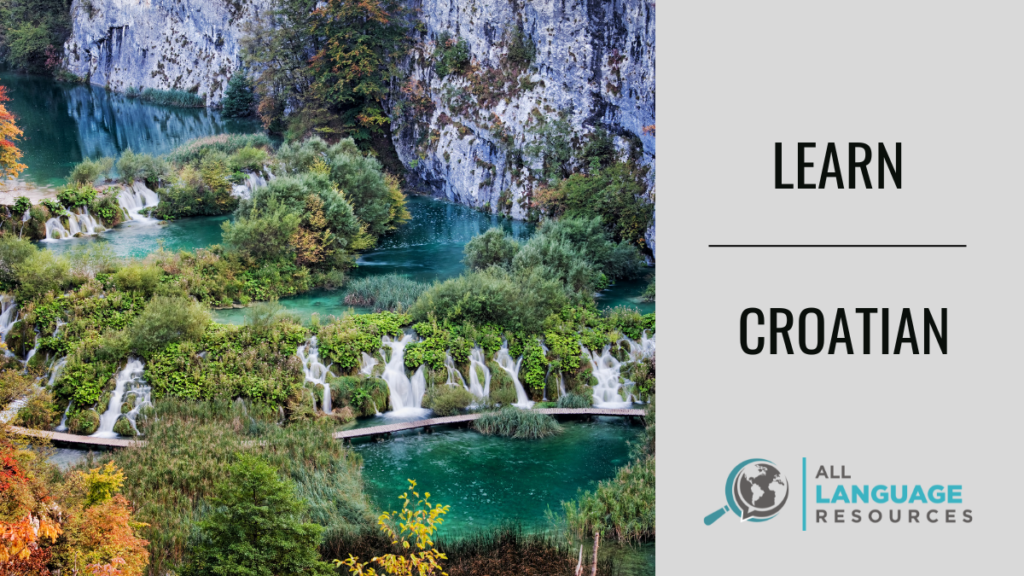When did the Croatian language begin? Was it during the Bronze Age, as the future fruit of the Balto-Slavic branch of the Indo-European languages tree?
Or was the Croatian language really born after the breakup of Yugoslavia?
The answer, tantalizingly, is both.
- A Little About the Croatian Language
- How to Learn Croatian Language for English Speakers
- What’s the Best Way to Learn Croatian?
- Is Croatian Hard to Learn?
- What’s the Easiest Way to Learn Croatian?
- How Long Does It Take to Learn Croatian?
- How to Speak Croatian?
- Additional Resources for Learning Croatian
- Other Media Resources for Learning Croatian
Learn Croatian with our ultimate guide for English speakers. Explore the Croatian alphabet, grammar, vocabulary, and effective learning strategies.
A Little About the Croatian Language
Croatian is a standardized form of Serbo-Croatian. It comes from the Eastern-Herzegovinian dialect, called Shtokavian (a/k/a Štokavian or Stokavian). It’s the most-used dialect of the Serbo-Croatian pluricentric language.
The Croatian language, known as hrvatski, is tied to the Croat ethnic group, who hail from the South Slavic countries. Croatian is one of the official languages of the European Union, with about five to seven million speakers worldwide.
Croatian is the official language of:
● Croatia
● Vojvodina, an autonomous province in northern Serbia
● Bosnia and Herzegovina
● Burgenland, a sparsely populated state in Austria
Thanks to the second wave of the Croatian Diaspora, Croatian has minority language status in the following places:
● Italy
● Montenegro
● Baranya County in Hungary
● Czech Republic
● Slovakia
● Caraş-Severin County in Romania
In addition to several countries and territories in Eastern Europe, it’s also spoken in South America, Canada, the United States, South Africa, and Australia. This is not too surprising since there are about as many Croatians living outside of their homeland as there are within its borders.
Croatian and Other Slavic Languages
Croatian bears a strong resemblance to other Slavic languages — even ones from different branches of the Slavic language tree. For example, in this experiment, a native Croatian speaker and a native Russian speaker tried to guess the meaning of words from their respective languages … with a fairly high degree of accuracy. Russian is an East Slavic language and Croatian is South Slavic. Yet, even after hundreds of years of divergence from a common root, the connection is still there.
The Croatian Language and Its Balkan Neighbors
Dig into the linguistic classification of Croatian, and its relationship to other Balkan languages — especially Serbian — and you’ll find yourself in a morass of multifaceted, passionate disputes. The Croatian language discussion archives on Wikipedia alone are only the tip of the iceberg.
The Croatian language is an integral part of Croatian national identity. Its modern history stretches back hundreds of years and is intertwined with the history of neighboring Balkan states.
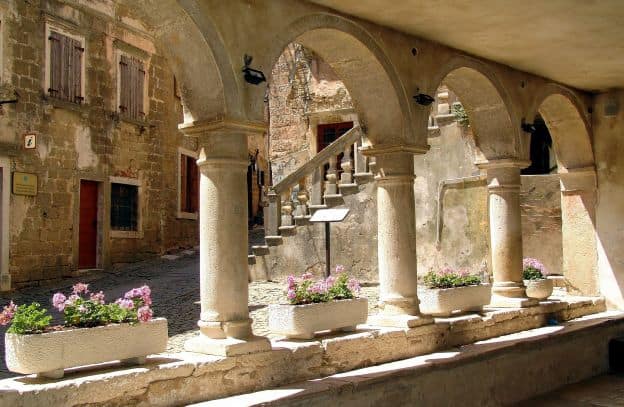
Take even a brief glimpse into the ongoing geopolitical conflicts between Croatia and Serbia, and you’ll get a taste of the fiercely nationalistic viewpoints that insist on labeling Croatian, Serbian, and Bosnia as three entirely separate languages … even though many sociolinguists don’t see it that way.
Robert Lindsay, a linguistic researcher from California State University, wrote an academic paper entitled “Mutual Intelligibility of Languages in the Slavic Family.” Lindsay found that oral Croatian and Serbian could be mutually understood up to 97% of the time. Lindsay also found high intelligibility (especially in the written language) between Serbo-Croatian and Macedonian.
Language and National Identity
Nationalism and linguistic identity are often tied together. For hundreds of years, languages have been suppressed in efforts to thwart nationalism, as clearly seen in the case of Welsh and Irish Gaelic.
Thus, it’s not surprising that what used to be called the Serbo-Croatian language has now been divided into the Serbian and Croatian languages, in the midst of efforts to reinforce the respective national identities of their speakers.
Serbian and Croatian Languages: Similarities and Differences
Michael from The Polyglot Files posits that the perception of the Serbian and Croatian languages as different from each other, rather than just two standards of the same language, is largely geopolitical and influenced by the nationalism of each respective country.

Similarly, the Serbian Mapping channel on YouTube — run by a native of Bosnia — goes so far as to state that Croatian, Bosnian, and Serbian are simply three parts of the same linguistic whole, despite the sociopolitical differences.
Consider American and British English, which are two different standard forms of the English language. There are some differences, to be sure. Yet native speakers of each version can fairly easily understand each other, even though the languages have changed somewhat since the upstart American colonists declared their independence from the Crown way back in 1776.
There are, indeed, some practical differences between Serbian and Croatian, just like there are between American and British English. Still, Croatian and Serbian share their grammatical structures and the majority of their vocabulary. In fact, you can still find Serbo-Croatian dictionaries online. It’s probably best to think of them linguistically as two different standards of the same language.
Writing Systems
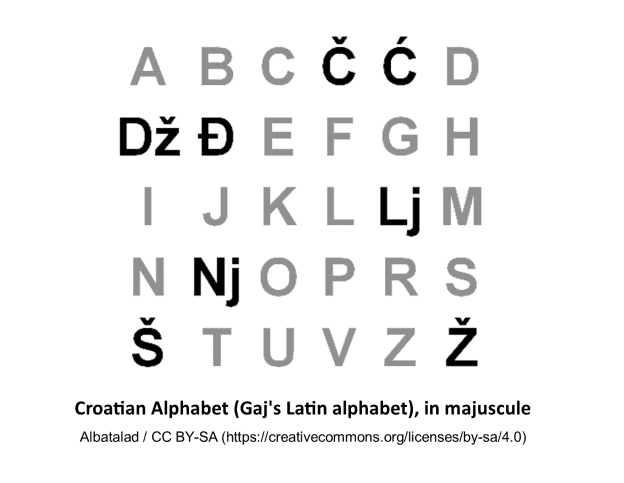
One way in which Serbian and Croatian differ linguistically is in their writing systems. Croatian is written in a variation of the Latin alphabet. Serbian uses the same version of the Latin alphabet, but it can also be written in Serbian Cyrillic.
How to Learn Croatian Language for English Speakers
While Croatian, like all languages, has its special challenges for learners, certain qualities make it a little bit easier to learn for English speakers.
One of these is the aforementioned Croatian alphabet, which is fairly similar to the one used in English … with the exception of a few letters.
We’ll get more into the Croatian alphabet in a little bit. For now, since you’re learning Croatian and not Serbian, you can heave a sigh of relief that you don’t have to learn the Cyrillic alphabet.
Croatian is fairly phonetic. Unlike English or French, Croatian has no silent letters — so you won’t have to remember which letters not to pronounce.
In English, there are some complicated letter combinations that get produced in odd and sometimes contradictory ways. (Imagine trying to explain to a non-native English speaker why “though,” “thought,” and “through” are all pronounced differently, even though they are spelled practically the same!) On the other hand, once you learn how to pronounce each letter in Croatian, what you see is what you get.
The sounds made by the same letters in different Croatian words don’t change, no matter where those letters appear in a given word. For instance, the letter e in zovem (I call) is pronounced the same as the letter e in se (myself). Both of them are said similarly to “eh” in English.
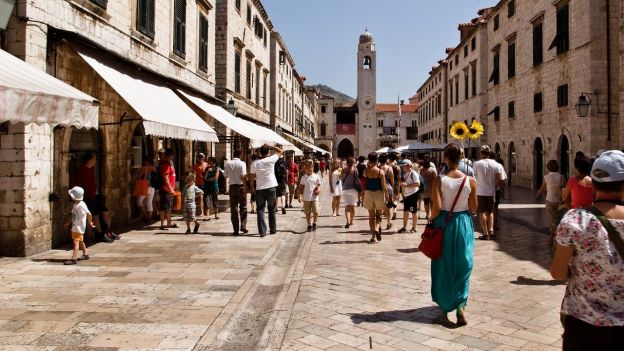
And speaking of se, this reflexive Croatian pronoun is actually easier than reflexive pronouns in English. Why? Because the reflexive pronoun dynamo known as se means all of the following:
● myself
● yourself
● oneself
● himself
● herself
● themselves
● each other
● one another
With any reflexive you could want covered in a single syllable, there’s still a catch: You’ll need to make sure that the verb form matches the subject pronoun. So, for instance, you might say, “Zovem se Adrijan,” (“I call myself Adrian,” or “My name is Adrian”) — but, when introducing a friend, you would have to say, “Ona se zove Vlatka,” (“She is called Vlatka.”)
Pitch Accent
Croatian isn’t tonal like Chinese, but it has a bit of a lilting or sing-song quality to its speech, thanks to a quality called “pitch accent.”
In English, we primarily tend to use stress accent: We pronounce one or more syllables of a word more forcefully than others. In the case of certain words, changing the syllable receiving the stress changes the word’s meaning —often, transforming nouns into verbs, or vice versa. For example:
You can object to an object that you suspect is suspect, then get a permit to permit you to desert it in the desert.
Spanish and Italian also have stress accent, also known as lexical stress. This gives them their own syncopated rhythms. French, by way of contrast, lacks lexical stress; each syllable is evenly stressed.
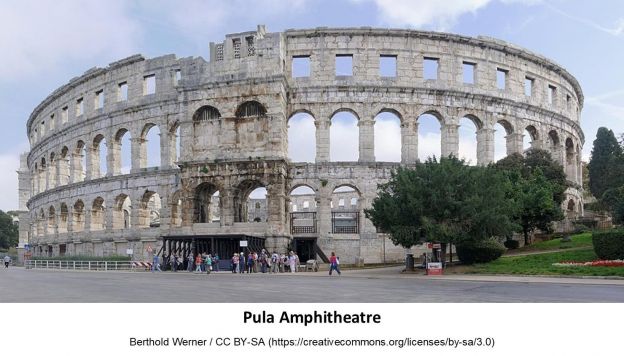
Standard Croatian employs both lexical stress and pitch accent, as well as long and short vowels. The stress accent almost never falls on the last syllable; it’s often on the first syllable. There are only two pitch accents: rising and falling. These occur in combination with long and short vowel sounds.
Lexical stress, pitch accent, and vowel length differ from one region to another, making local various accents easily recognizable to native speakers. To simplify matters for learners of Croatian, these lexical and pitch accent changes are not written. All dialects use the same spelling, including diacritical marks.
The Learn Croatian blog introduces the rising and falling accents used in Croatian. Good-quality sound clips demonstrate changes of pitch in various examples.
The table of words marked “Examples of different accents” is particularly helpful. To hear the differences between long and short vowels, listen to a short vowel/falling accent word immediately followed by a long vowel/falling accent word. Then try comparing the rising and falling accent words with short or long vowels. (The rising and falling pitches seem easier to distinguish on the long vowels.)
Finally, try clicking randomly on sound clips within the “Examples of different accents” table to hear and identify the different combinations. This will help you to hear the stress accents, as well.

The Basic Croatian site has an even more detailed article about pitch accent in Croatian, which lacks the sound clips but launches into thorough explanations of grammar (including declensions and prepositions), fixed stress and falling-rising stress in Standard Croatian, and regional differences in both pitch and lexical stress.
The Croatian Alphabet
The Croatian alphabet is very similar to the Latin alphabet used by English speakers. Croatian — along with several other Balkan tongues — uses a variation on the Latin alphabet that was created primarily by a 19th-century Croatian linguist named Ljudevit Gaj.
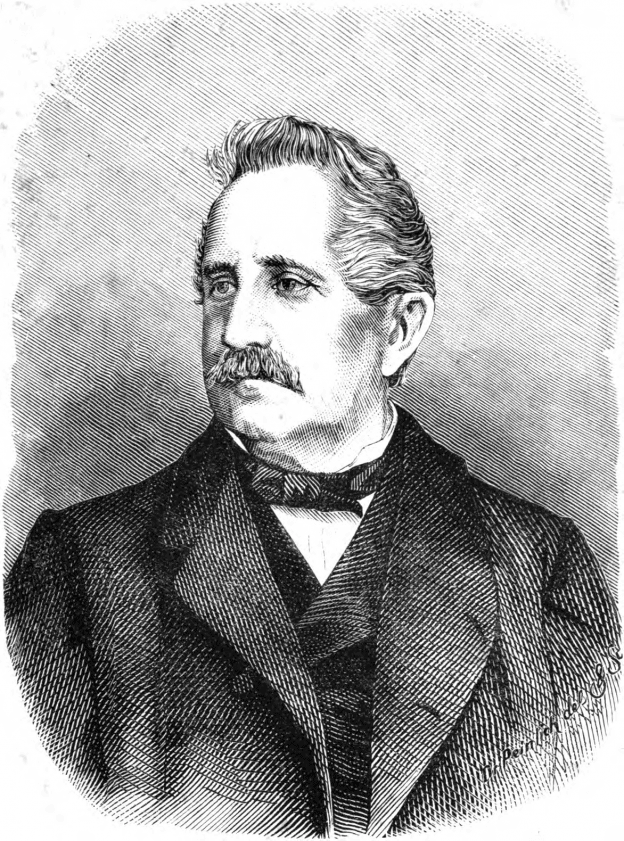
When he was devising his own version of the Latin alphabet to represent spoken Croatian in a standardized way, Gaj looked to the Czech and Polish alphabets for inspiration.
If you’re a native native speaker of English — or another language that uses a Latin alphabet — learning Croatian won’t mean memorizing a different writing system. However, there are a few essential differences between the English-language alphabet and the Croatian one, as Croatian genealogist Lidija Sambunjak explains in her article, “Eight Croatian Letters that English Doesn’t Recognize.”
To the standard Latin alphabet, Gaj added the nj, lj and dž. These are heterogeneous consonant digraphs — a combination of two different letters that function phonetically as a single sound.
Quickly check out these consonant digraphs in English, which I’ve boldfaced and underlined to show you how frequently they creep into standard English writing.
In Croatian, unlike English, nj, lj and dž are not just recognized digraphs — they’re each considered separate letters of the Croatian alphabet. But these digraphs are not the only special letters Croatian learners must digest.
Just like n and ñ are two distinct letters in the Spanish alphabet, č, ć, and c are all discrete letters in the Croatian alphabet. To this native anglophone’s ears, the difference between č and ć is very subtle, and will require patience and much careful listening to master. According to the Balk Talk channel on YouTube, “Č requires the tongue to touch the roof of the mouth while Ć requires the tongue to stay centered and the sides lightly touching the bottom row of your teeth.”
And it doesn’t end with the three kinds of Croatian Cs. There are also three variations on the letter d in Croatian (d, dž, and đ), a set of S letters (s and š), and the dynamic duo of z and ž.
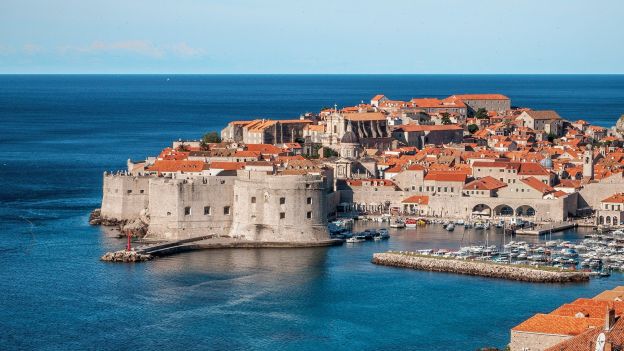
This article from the Learn Croatian blog breaks down some of the trickier letters in Croatian in even more detail, with example words and audio files so you can learn the proper pronunciation.
Practicing the Croatian Alphabet
Since the Croatian alphabet is based on the Latin one, it should not present too much difficulty for English speakers. It’s certainly worth practicing its sounds and special letters, though.
The Learn 101 website hosts a Croatian alphabet section, with written and spoken pronunciation examples for each letter. There’s also an International Phonetic Alphabet equivalent listed for each letter in the chart — so, if you’re already conversant with the IPA, this can be a quick way for you to grasp the pronunciation of the Croatian letters.
There are a few YouTube videos with pronunciation tips for the Croatian alphabet. The aforementioned Balk Talk channel has a video entitled “Croatian Alphabet + Pronunciation Hacks for Beginners!” Along with numerous pronunciation hacks for those special Croatian letters such as lj and dž, the video repeatedly reassures learners that native speakers will be able to understand them by context clues, even if they can’t quite get the hang of the finer points of pronunciation.
The Croatian ALPHABET (Pronunciation) video from Jenama Amo takes time to explain a bit more certain letters. For instance, dž is ordinarily used to spell loanwords in Croatian. Lj Croatian is like the lyuh sound in the middle of the English word “million”; nj in Croatian is like the nyuh sound produced by the ñ in niño (boy) or the gn in lasagna. This video also uses colorful cartoon drawings to illustrate example words for each letter of the Croatian alphabet.
For more interactive practice, try the Croatian Alphabet course on Memrise. It comes with full audio, and quizzes you on the letters and their sounds. Your answers will be a combination of multiple-choice and fill-in-the-blanks. With example words for each letter of the Croatian alphabet, you’ll pick up some basic vocabulary as you’re learning the letters.
Typing in Croatian
Instead of learning unicode or copying and pasting characters from a resource like the Windows Character Map, the fastest and easiest way to type Croatian text on a QWERTY keyboard is to use a virtual online keyboard. You can just type into the text editor on screen, selecting the special Croatian characters as needed.
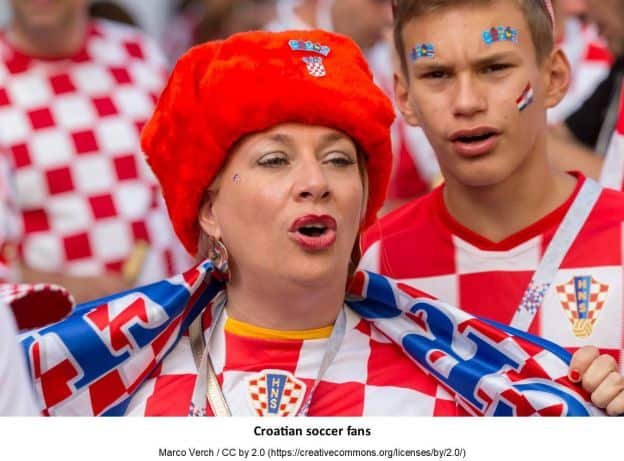
The Branah Croatian keyboard is set up to allow you to type letters such as š or đ simply by pressing the corresponding keys on your physical keyboard. You’ll see an onscreen “keyboard map” that will show you, in red (for lowercase) or blue (for uppercase) the Croatian letters that map to your keyboard keys. Press the Escape key on the virtual keyboard to toggle between the English and Croatian alphabets:
The Lexilogos Croatian keyboard is set up differently than the one on Branah.com. Rather than a full keyboard, Lexilogos gives you buttons for each of the special characters — plus an array of letters “for learning Croatian,” which seems to have symbols for the different pitch accents we discussed earlier.
To type the special Croatian characters directly from your physical keyboard, you’ll use a combination of the base letter (c or d, for example) followed by one or two equals signs. For instance, to produce đ with the Lexilogos keyboard, you’d type d= on your physical keyboard.
There are numerous virtual Croatian keyboard apps for mobile devices, whether you use an Android device or an iOS phone or tablet.
What’s the Best Way to Learn Croatian?
The best way to learn Croatian is to start with a comprehensive course that gels with your learning style. While there are not as many resources available to help you learn Croatian as you could find for a language like English or Spanish, this article provides a great list of courses to choose from.
You can then bolster this learning method by supplementing it with other resources, like online tools to build your vocabulary, conversation groups to practice pronunciation, and more.
Is Croatian Hard to Learn?
Croatian is considered a difficult language for most English speakers to learn. The FSI ranks it as a Category Four language, along with other languages like Polish, Greek, and Hungarian.
The difficulty of a language usually stems from how different it is from your native tongue. Slavic languages do have lots of differences from English, whereas a language like Spanish shares many romantic roots with English, making it much easier to learn in comparison.
What’s the Easiest Way to Learn Croatian?
For most English speakers, the easiest way to learn Croatian is to sign up for a class, either online or through a tutoring app. While programs like Rosetta Stone and Duolingo don’t offer a Croatian course right now, you can find reputable programs like Pimsleur that do.
If you want a more personalized course, you may find that connecting with a tutor via an app like italki or Verbling works better for you. The key thing is to make regular progress through a structured course that covers all the key areas of the language.
How Long Does It Take to Learn Croatian?
The FSI ranks Croatian as a level four language with many differences from English, which takes about 1100 hours of dedicated study for most English speakers to learn. By this standard, you could achieve basic proficiency in Croatian after about three years if you study for a solid hour a day.
In practical terms, how fast you will learn Croatian depends on many personal factors like whether you already know another Slavic language, or even if you have learned other languages in the past.
Your motivation for learning can influence how fast you learn, too. If you only need enough Croatian to help you conveniently get around on a business trip, you will not need to study for three years. But if you plan to move to Croatia, you will likely find yourself continuing to study and perfect your linguistic skills for years, if not for the rest of your life!
How to Speak Croatian?
One of the great things about learning to speak Croatian is that it is a phonetic language. This means that you simply need to learn how to pronounce each letter in the Croatian alphabet, and they will always make the same sound in words! You can find great resources like the Learn 101 website in this article to help you master the basic sounds of the Croatian language.
Of course, you will still need to put in your time doing listening comprehension activities and actually speaking Croatian. But you will not need to worry about silent letters or vowels that make multiple different sounds like you do in English.
Additional Resources for Learning Croatian
Aside from structured Croatian language courses or apps, having additional learning resources and material is always recommended. Whether as a way to know more or as reference points, supplemetary resources are beneficial to help you improve and strengthen your language skills.
Croatian Blogs and Websites
These websites and blogs can give you a little extra information to guide you along as you learn Croatian through courses, apps, and other resources.
DinoLingo Blog
The DinoLingo blog, part of an online youth language-learning program, has a section devoted to Croatian language and culture. These short, simple blog posts touch briefly on numerous topics, including common Croatian words and phrases, food, music, travel, history, and etiquette.

While not a deep dive into the Croatian language, these articles can give you a little taste of the language and culture, and help you to put it into context.
Školica Croatian Language School
Školica Croatian Language School makes some freebies available to all students of Croatian. There’s an assessment test using CEFR language standards, vocabulary training by category, and interactive grammar questions.
The site also features a Learn Croatian blog, which covers both the language and the culture. Travel features such as this article on survival Croatian include audio clips for the vocab.
Forvo
Not really a Croatian website per se, but a useful resource to search for various Croatian words and hear them pronounced properly. Forvo breaks down the words and phrases by category. You can also use Forvo as an iOS or Android app, allowing you to learn on the go or consult the proper pronunciations while you travel in Zagreb and beyond.
Picture Dictionaries and Basic Vocab Books
If you want a very simple approach English – Croatian Bilingual First Top 624 Words Educational Activity Book for Kids might be a good choice for you. Essentially a picture dictionary, this book presents the words in seemingly random order — which might not be ideal, if you prefer a more structured or well-ordered approach to learning vocabulary.
My First Picture Dictionary is a more traditional picture dictionary, with alphabetized entries in English and Croatian. This title is also available on Amazon.
Author Marija S. brightens up the world of Croatian words with this series of My First Croatian… books, including volumes on numbers, the alphabet, communication words, household objects, clothing, health, and weather.
Transform your understanding of basic Croatian vocabulary concepts from black-and-white to color with this English Croatian Coloring Book for Kids. Treat yourself to the big box of crayons and write your new Croatian words in the blank spaces next to the pictures.
Online Croatian Dictionaries
For convenience and expediency, nothing beats a good online dictionary.
Glosbe has both a Croatian-English and English-Croatian dictionary. Click on the keyboard icon near the search box in the left sidebar to access the special Croatian characters. This dictionary identifies parts-of-speech usage, provides numerous translation choices and examples, and even differentiates between lower-case and upper-case meanings of certain words. (For example, here’s what happened when I typed “Word” into the English-Croatian dictionary.)
This simple English/Croatian dictionary has fewer examples in context than the Glosbe dictionary, but doesn’t skimp when it comes to displaying numerous terms related to even such basic words as “apple” or “book.”
Try a few different online dictionaries until you find the format you prefer.
Croatian Slang
As you learn more Croatian and start to move from the most basic resources like children’s books to Croatian newspapers and television, you’ll find yourself transitioning from the more formal language as it’s taught in school to a more complex, familiar register — one that’s enriched yet complicated by idiomatic phrases and slang.
Fortunately, there are several resources to introduce you to Croatian’s red-hot jive.
Croatia Week, an English-language website on all things Croatian presents an article that will get you up-to-speed with about twenty slang words and phrases.
The Mindful Mermaid’s “A to Ž: Croatian Phrases and Slang 2020” will make your conversational Croatian much more hip. With the sleek Pinterest posters illustrating several words and the memorable, detailed explanations, you’ll understand these colorful metaphors in their proper cultural context.
This article from Culture Trip, “15 Beautiful Croatian Phrases We Need in English,” explains some Croatian proverbs and well-known sayings.
If you’d like an extensive alphabetical listing of Croatian proverbs, with English equivalent sayings and etymological notes, check out this Wikiquote compilation.
Bilingual Books
Bilingual books can give you just the help you need when you’re taking your first steps to read in Croatian. You can cover up the English translation when you want to challenge yourself more.

Children’s picture books such as Am I small? Jesam li ja mala? will lead you through a simple story with very basic vocabulary. The repetition inherent in children’s books will help reinforce the words you’re learning. Amazon offers a few other Croatian-English bilingual selections.
Children’s bilingual book site Language Lizard draws on literary traditions from across the world as the foundation for its bilingual book series. Journey to Ancient Egypt with Isis and Osiris by Dawn Casey or follow the further adventures of a certain crimson-cloaked girl in Kate Clynes’ Not Again, Red Riding Hood!
Croatian eBooks and Print Books
As you reach intermediate and advanced levels of Croatian learning, supplement your other language resources with books and short stories completely in Croatian.
Self-publishing platform BookRix offers a selection of Croatian ebooks in various genres, many of them available at no cost.
If you prefer print books, Australian-based Zagreb Croatian Bookshop has nonfiction, fiction, history, and reference books (dictionaries, grammar guides, etc.).
For ebooks as well as paperbacks and hardbacks, Amazon.com offers a few thousand Croatian-language choices.
Other Media Resources for Learning Croatian
When you aren’t learning Croatian in the more traditional way, how about immersing yourself in more authentic Croatian content? Croatian newspapers, magazines, social media, radio, TV, and film are all great ways to help you learn more about the language and culture.
Croatian Periodicals
Here are a handful of online Croatian newspapers to get you started:
● Portal Hrvatskoga Kuliturnog Vijeća (Peruse this national publication of the Croatian Cultural Council.)
● Dubrovački Dnevnik (Focus on life in the southern Croatian city of Dubrovnik, on the Adriatic Sea.)
● Glas Istre (Hear The Voice of Istria with news from an Italian and Serbian presence, as well as a Croatian population.)
● JutarnjiList (Get your morning news from Zagreb, with articles on current events, culture, money, technology, and lifestyle topics.)
OnlineNewspapers.com has an even more extensive list of Croatian periodicals.
If you prefer magazines to newspapers, try some of these choices:
● Fitness.com.hr (Keep fit and get your Croatian into shape with these articles on training, exercise, weight loss, and nutrition.)
● Zivim (Stay in style with tips for beauty, health, fitness, stress relief, and personal relationships from this Croatian women’s magazine.)
● Macho (Fulfill your need for speed with this men’s magazine featuring articles about cars, sports, relationships, technology, and more.)
● HCL Gaming Portal (Win at learning Croatian with this magazine devoted to the finer points of gaming systems and video gameplay.)
● MojTV (Indulge in Croatian coverage of the small screen and the silver screen, with a sports section and some celebrity news.)
● InDizajn (Feel fashionably at home with this slick interior design magazine.)
● Coolinarika (Get cooking with thousands of Croatian recipes, from appetizers to desserts. Lots of short videos and step-by-step instructions to help you get started.)
You’ll probably find that there are several Croatian newspapers and magazines you enjoy. Mix up your periodical reading a bit, just to expose yourself to the language in more contexts.
Help with Croatian Periodicals
Even if you’ve been learning Croatian for a few years, chances are good that you’ll run across a few words you don’t know when you’re reading Croatian periodicals. When you read a book, it tends to focus on just a few themes or topics. When you read a newspaper or magazine, the subject matter can be much more diverse.
Readlang is a browser extension that you use in conjunction with any Croatian website, such as an online Croatian newspaper. Just hover over an unknown Croatian word to highlight it, then click on the word to get it glossed in your native language.
You’ll need to log into Readlang to use all of its features, such as getting translations of entire phrases and managing your personal word list. Readlang will remember highlighted words from the Croatian texts you’ve read and automatically create a flashcard set for you. When you flip over each flashcard, you will be asked, “Did you remember?” Your choices are “Not at all,” “Almost,” and “Yes.” There’s also an option to type out the word in Croatian when you are given the English translation.
Readlang’s Croatian is still in beta mode, so you may run across a few bugs as you’re using it. Nonetheless, it’s a fairly helpful tool, since it saves you time toggling between Croatian reading material and an online dictionary.
Croatian Social Media
There are reams of Croatian social media accounts out there. However, social media can be rife with misspellings, arcane abbreviations, and poor grammar.
As a language learner, you’ll probably want to focus on accounts that will teach you the language correctly.
Social media from outlets such as newspapers or other, more official sources can be a good choice for learners.
Twitter Accounts
Twitter, in particular, exposes you to snippets of the language, so you can learn in bite-sized pieces.
Twitter can also lead to longer-form content, as well as intense, online discussions. Even if you just browse for a while, you’ll still be learning more Croatian as you go. And, once you feel a little more confident, you can jump into the fray and make a few comments of your own!
Croatian Language School
A mix of Croatian and English-language content. Usually, the English content is presented first in each tweet, with the Croatian translation directly underneath it. A helpful place to start for learners at various levels.
There are frequent tweets and retweets on various topics, with a moderate amount of interaction from other users. Most of the tweets start with a simple question about daily life, so don’t be shy — answer questions that interest you, and be part of the conversation.
mCroatia
A slice of Croatian life, run by the proprietor of a souvenir shop headquartered in Samobor. There’s a lot of lively commentary in Croatian on day-to-day events, and the occasional opinion poll.
Portal hkv.hr
Great for keeping up with current national and international events from a Croatian perspective, this is the Twitter account for the Portal Hrvatskoga Kuliturnog Vijeća national newspaper.
It was inactive for a while and doesn’t have a lot of followers, but it seems to be picking up a little steam. It should be easy to keep up with, even if you don’t have a lot of time to devote to it.
Glas Istre
All the latest news from Pula, Istria, Crotia, with several updates a day. Pithy taglines lead to longer articles on the newspaper’s website.
HDZ
The official Twitter account of the Croatian Democratic Union. Presents Croatian current events with a political spin.
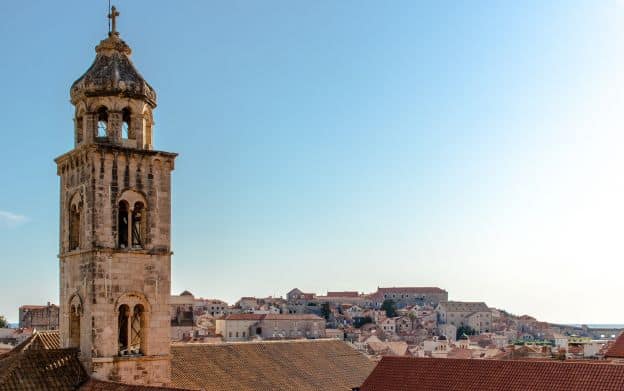
Croatian Radio
Cruise the Croatian airwaves with dozens of online radio stations. Services such as Streema, TuneIn, and SurfMusic will tune you into Croatian news, techno, Top 40, sports coverage, and more.
Even if you have limited understanding at first, Croatian radio will help you hear the true sounds of the language.
Croatian TV
Croatian television may not be as easy to come by as Telemundo or Univisión, but it’s out there.
Free and Low-Cost Options
There are limited free streaming options online. This page from News Media Lists provides links for instant streaming of a few stations. Independent station Jabuka (Apple) is listed twice. Osječka televizija takes you to the region of Spačva in Eastern Croatia. N1 Hrvatska is a national television station; unfortunately, I tried three different browsers and couldn’t get it to stream.
If you already have a Roku hooked to your TV, you can power it up with the Croatia TV channel for a tiny fee — usually, less than a dollar a month. You’ll usually find news reports and local access-style programming, with interesting cultural features and programs about everyday life. Use repeated broadcasts to improve your understanding of the Croatian content, catching words and phrases you may have missed on your initial viewing.
Get more out of an existing Amazon Prime subscription by searching for Croatian programming on Prime Instant Video. Although some of what you find will be travel shows set in Croatia — or other programming only tangentially related to the country or its language — it’s worth a look. As of this writing, Amazon Prime had at least a handful of movies, TV series, and shorts in Croatian. Some of them have mandatory English subtitles, but some are just in Croatian.
Premium Croatian Television
If you’re at the point in your Croatian learning journey where you feel like it’s worth the investment, there are several subscription services for Croatian broadcasts with broader, less repetitive content. Some of them have a free trial period, so you can see what you’re getting before you make an investment.
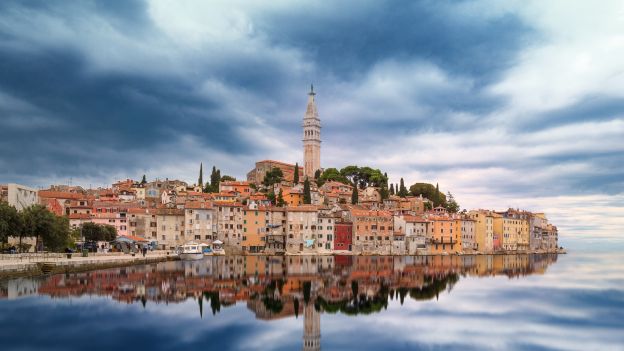
In early 2018, National Croatian broadcaster HRT made a new channel available for Croatian speakers living abroad. HRT 5 is available as a satellite service in Europe. It can be watched as a subscription service in New Zealand, Australia, and North America. These subscription packages, combining several television and radio stations, come at a heftier price tag than Roku or Amazon’s offerings. However, if you’re an intermediate learner looking for content that can propel you into advanced Croatian, you might consider this option.
Try to find television shows that match your interests. You’re more likely to watch if the topic is something you care about. If the presentation is absorbing enough, you’ll start to forget that you’re watching it in Croatian.
Try different kinds of programming to keep it interesting. This will also increase your exposure to specialized Croatian vocabulary and different registers of the language.
When it comes to learning Croatian, we might say, “Orah ima tvrdu ljusku.” This literally means that the “walnut has a hard shell” — and it reminds us that it takes dedication to get to something that’s delicious, nourishing, and satisfying.
Croatian might seem like a hard nut to crack at first. But with slow, steady effort, and the variety of learning resources presented here, možete pronaći uspjeh (you can find success).

